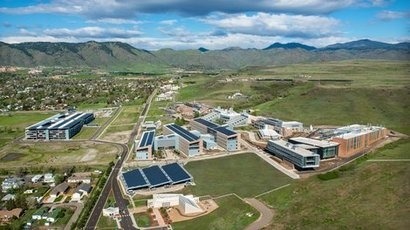
The newly certified record conversion efficiency of 29.8 percent was set using a top cell made of gallium indium phosphide developed by NREL, and a bottom cell made of crystalline silicon developed by CSEM using silicon heterojunction technology. The study has been published in the Solar Cell Efficiency Tables in the journal Progress in Photovoltaics.
“It's a record within this mechanically stacked category” said David Young, a senior researcher at NREL. “The performance of the dual-junction device exceeded the theoretical limit of 29.4 percent for crystalline silicon solar cells.”
Christophe Ballif, head of PV activities at CSEM added that the silicon heterojunction technology is probably the most efficient silicon technology for application in tandem solar cells today.
Mr Young is a co-author of the paper ‘Realization of GaInP/Si dual-junction solar cells with 29.8 percent one-sun efficiency’ in which the scientists set out the steps taken to break the previous record. His co-authors are Stephanie Essig, Myles Steiner, John Geisz, Scott Ward, Tom Moriarty, Vincenzo LaSalvia, and Pauls Stradins.
The paper has also been submitted for publication in the IEEE Journal of Photovoltaics.
The funding for the research came from the Energy Department's Office of Energy Efficiency and Renewable Energy SunShot Initiative, which aims to make solar energy fully cost-competitive with traditional energy sources and from the Swiss Confederation and the Nano-Tera.ch initiative.
For additional information:
National Renewable Energy Laboratory (NREL)

